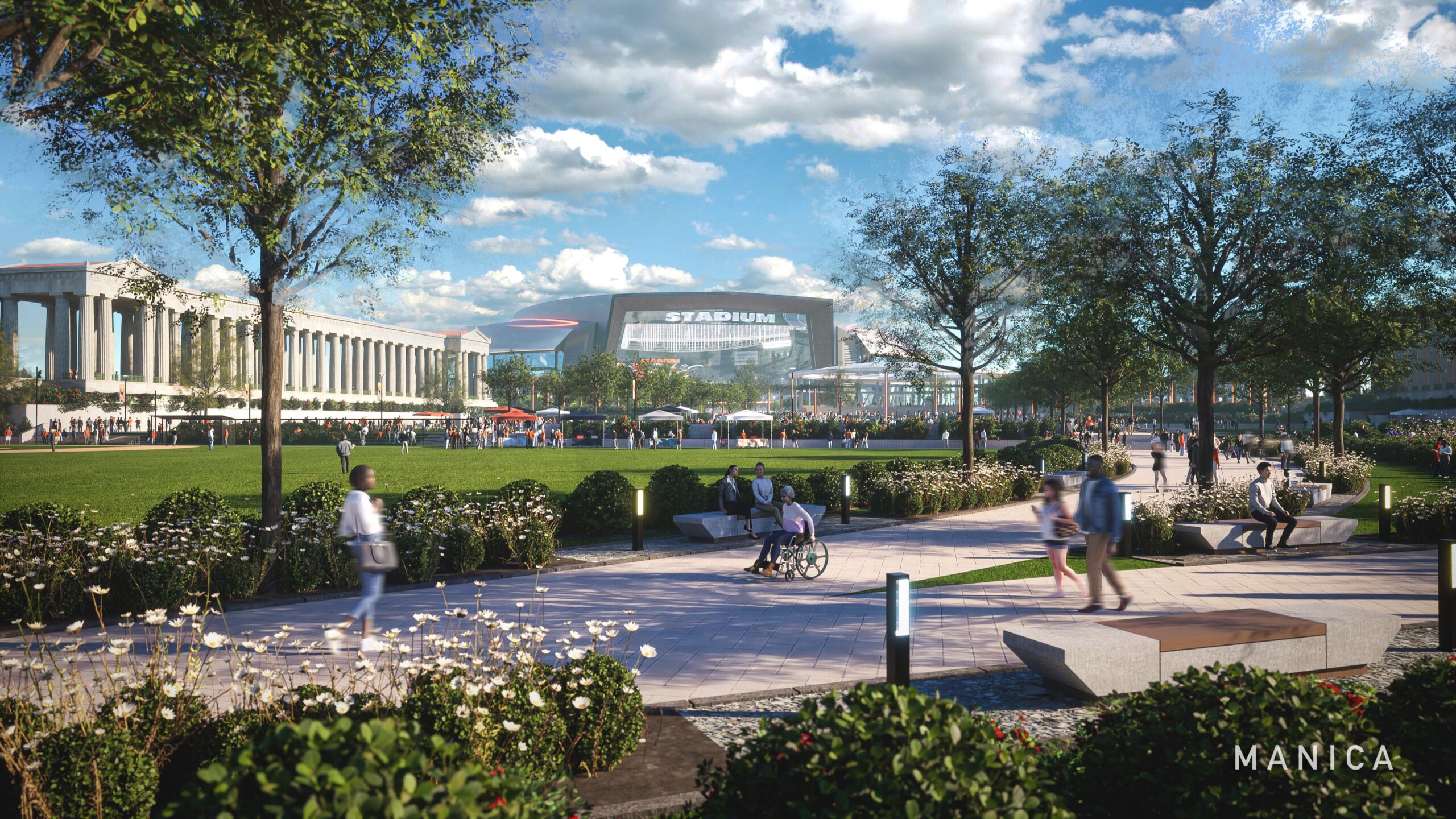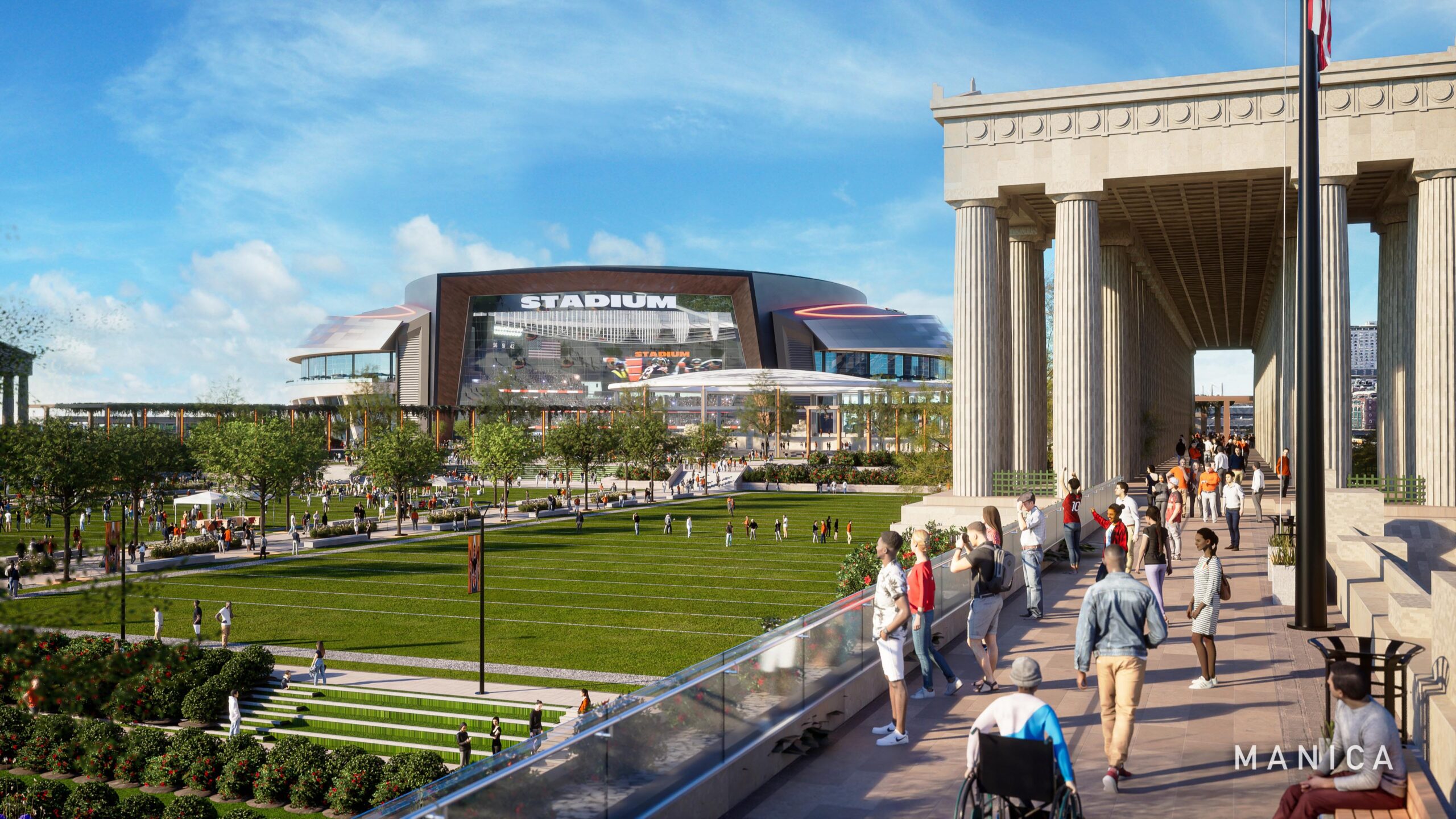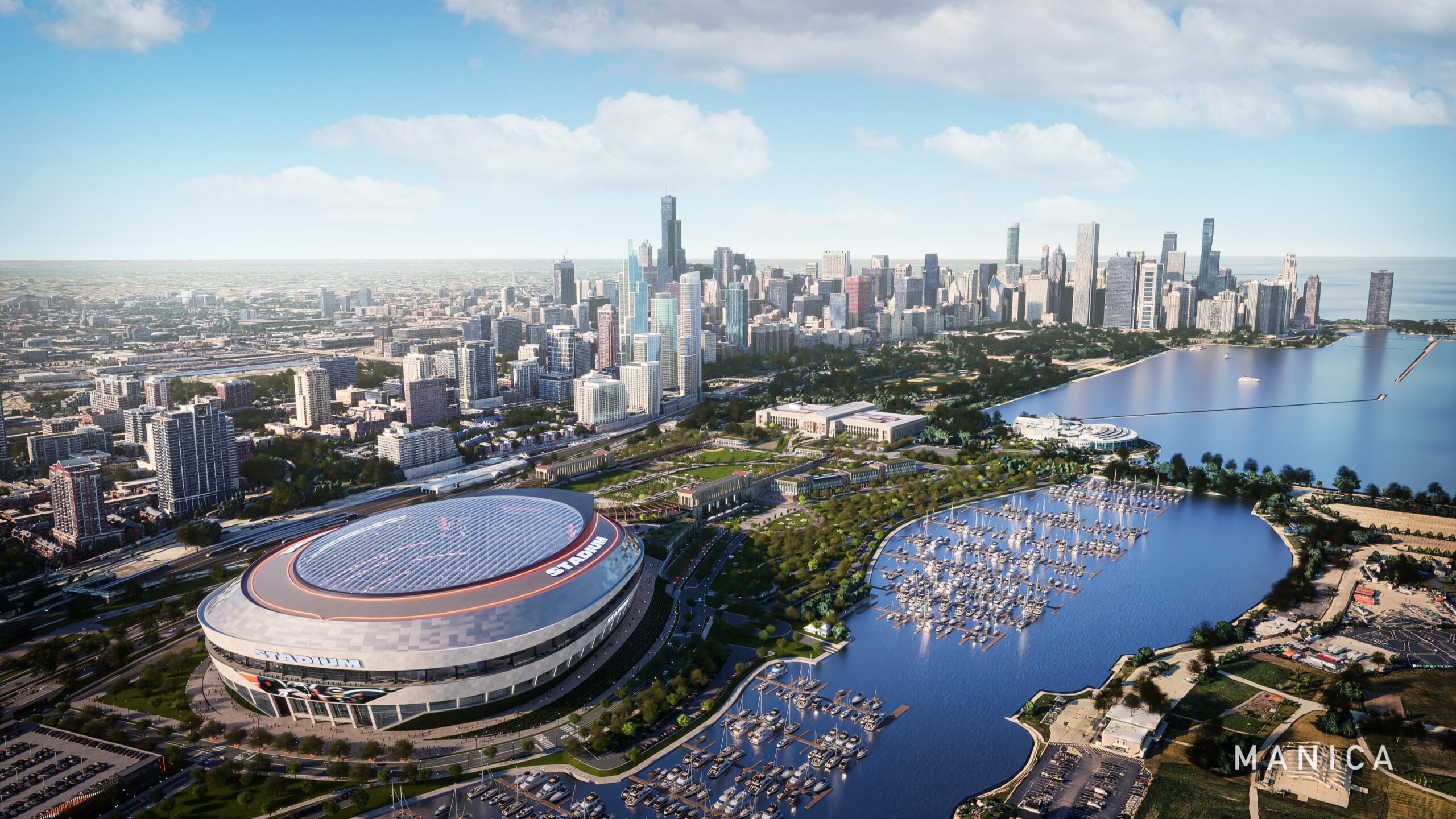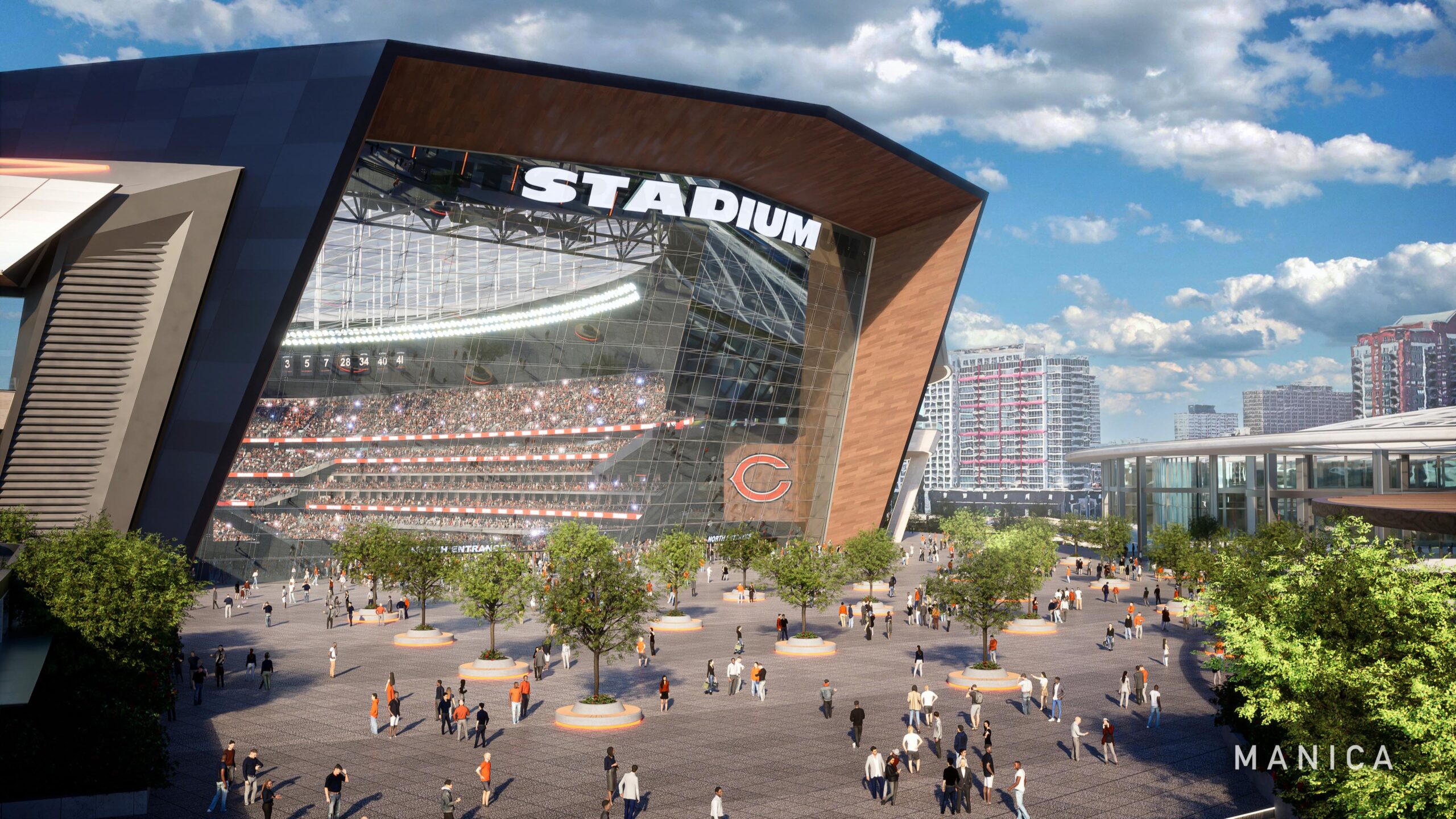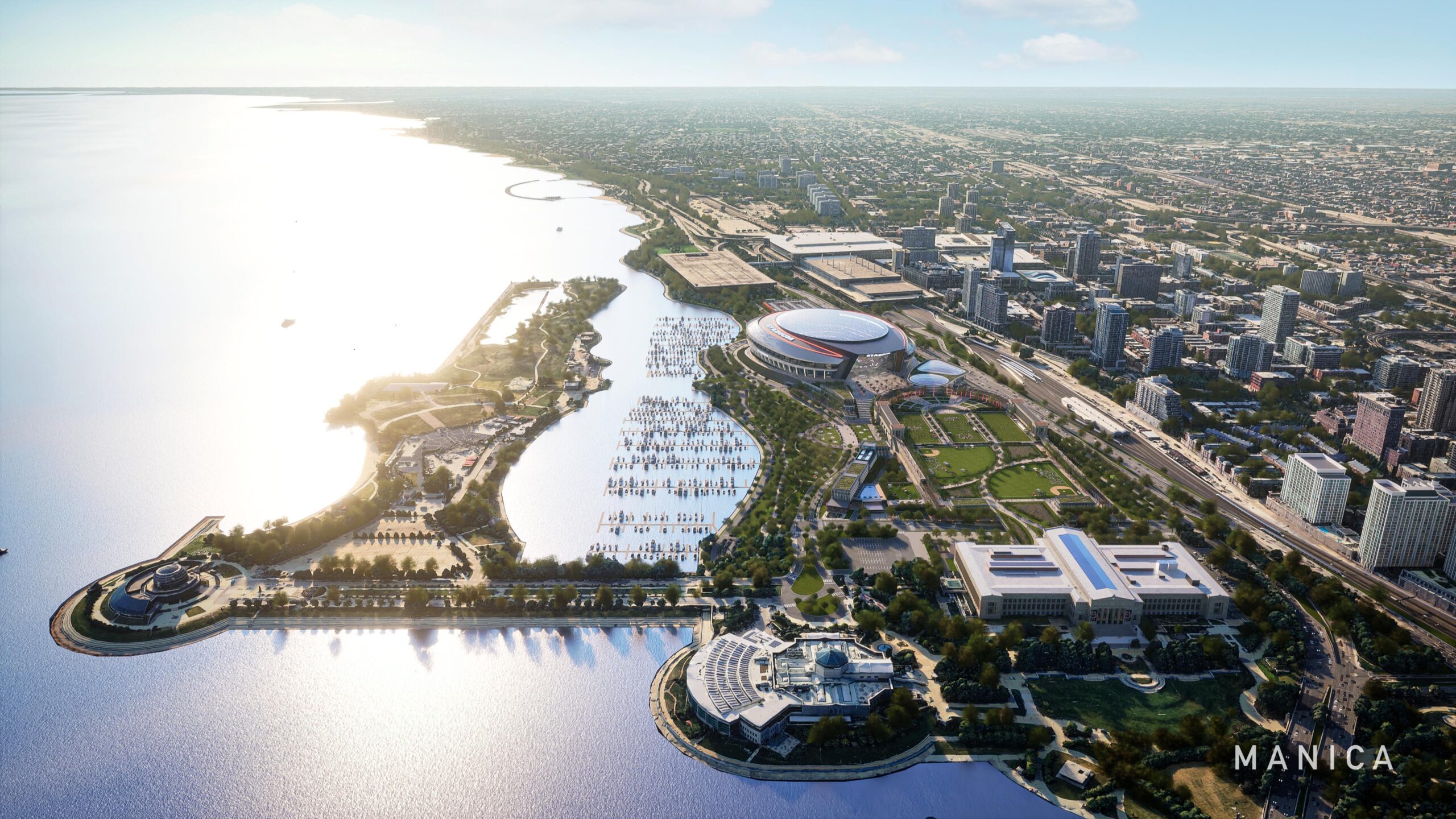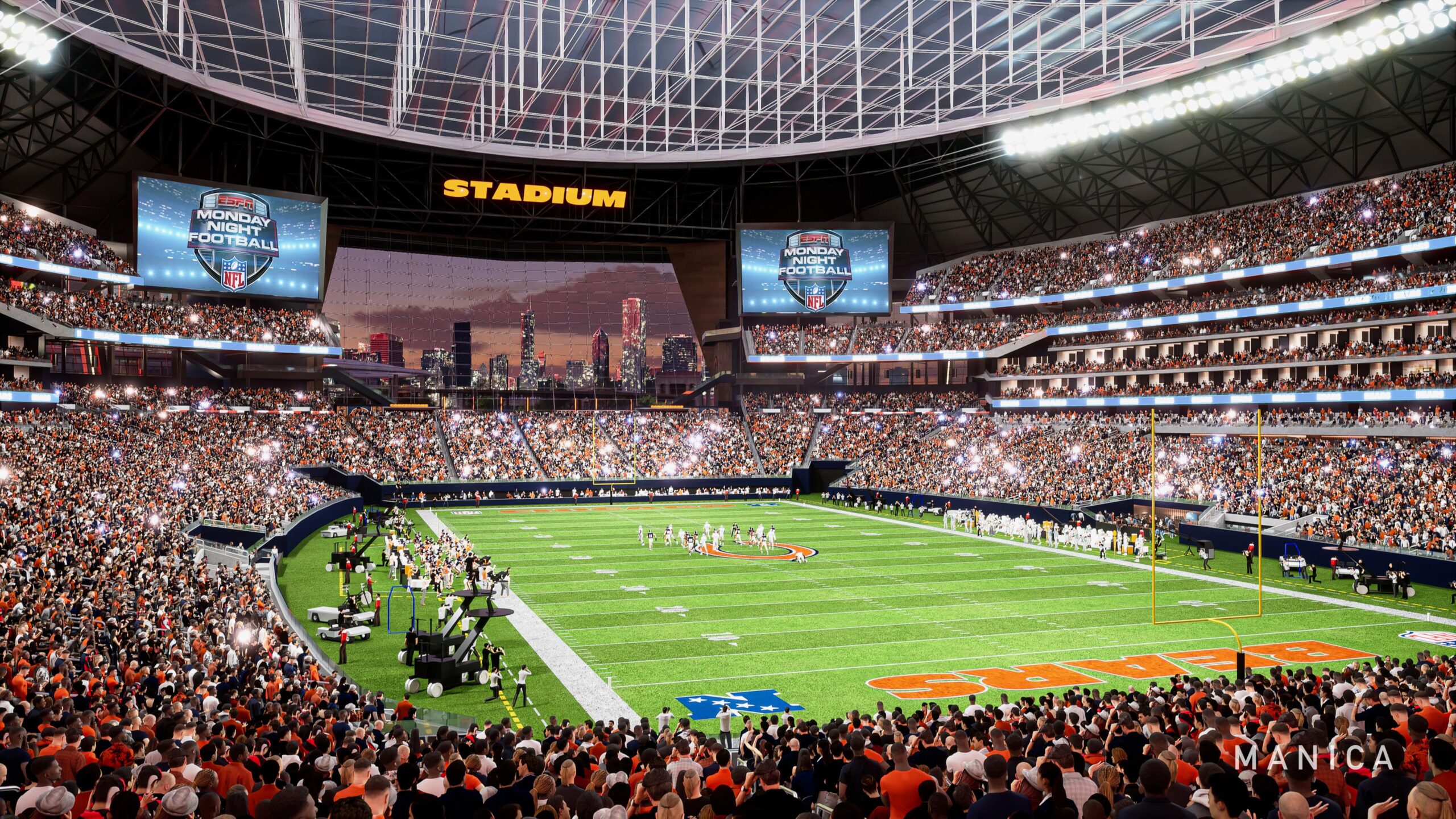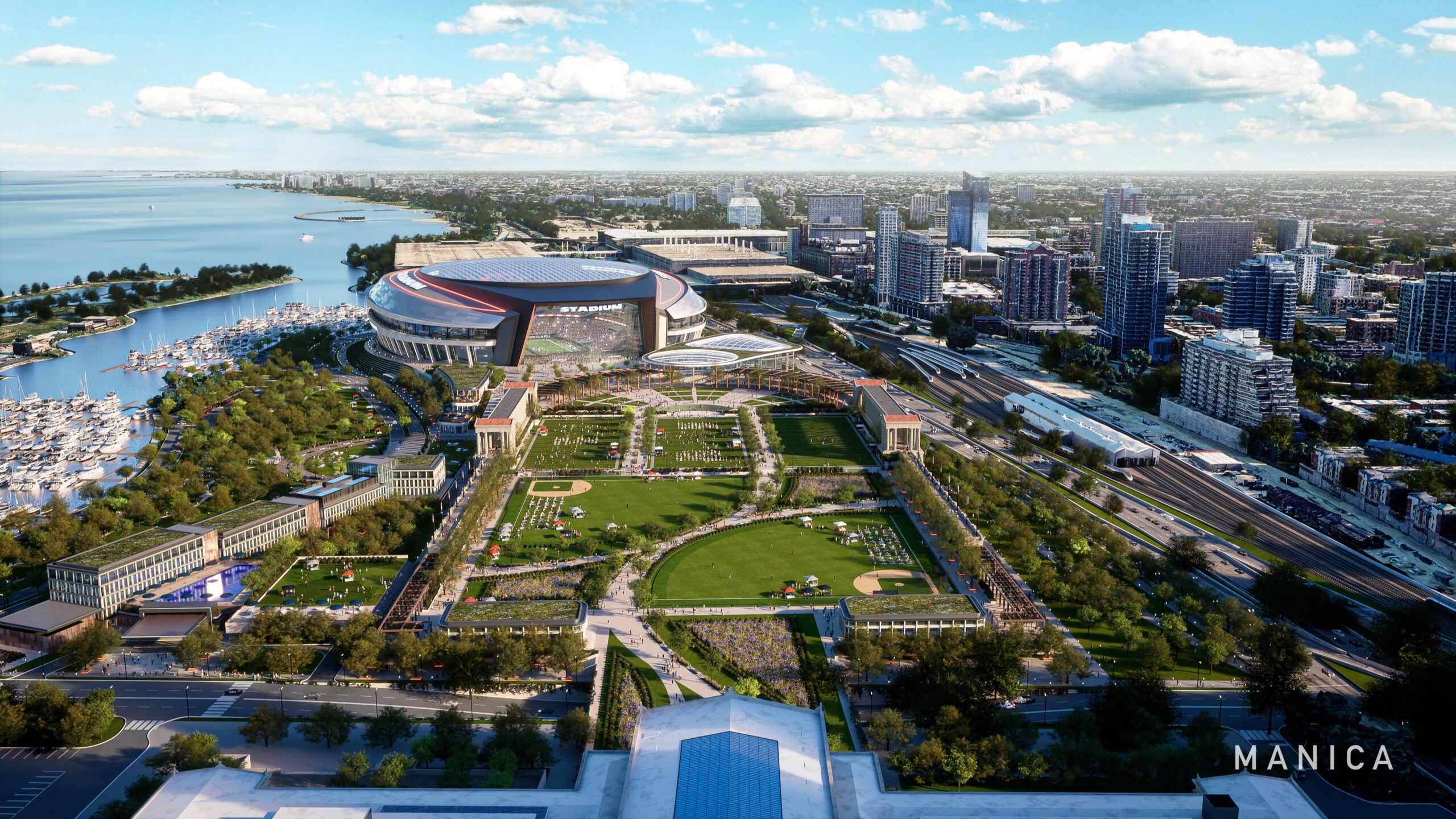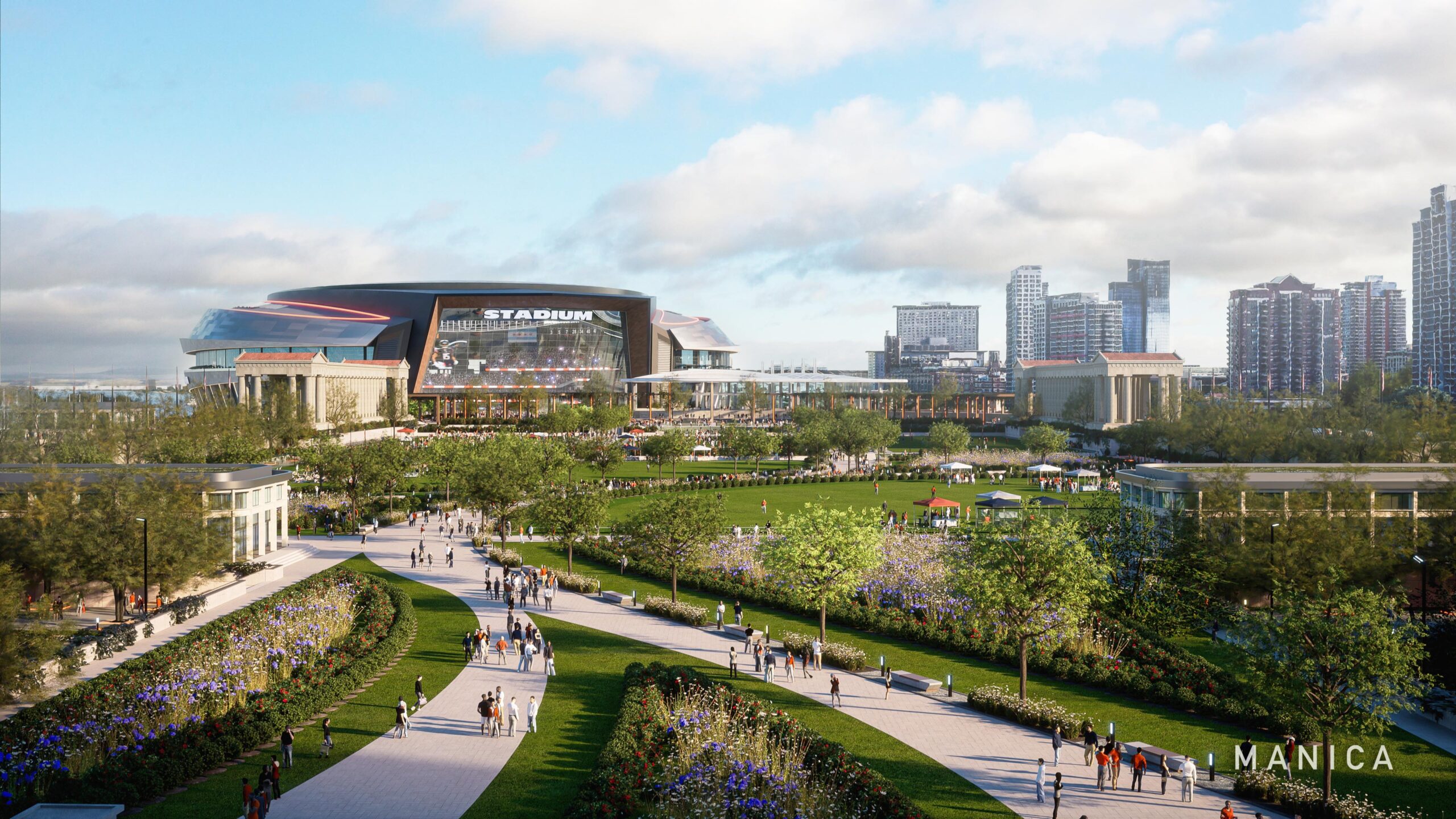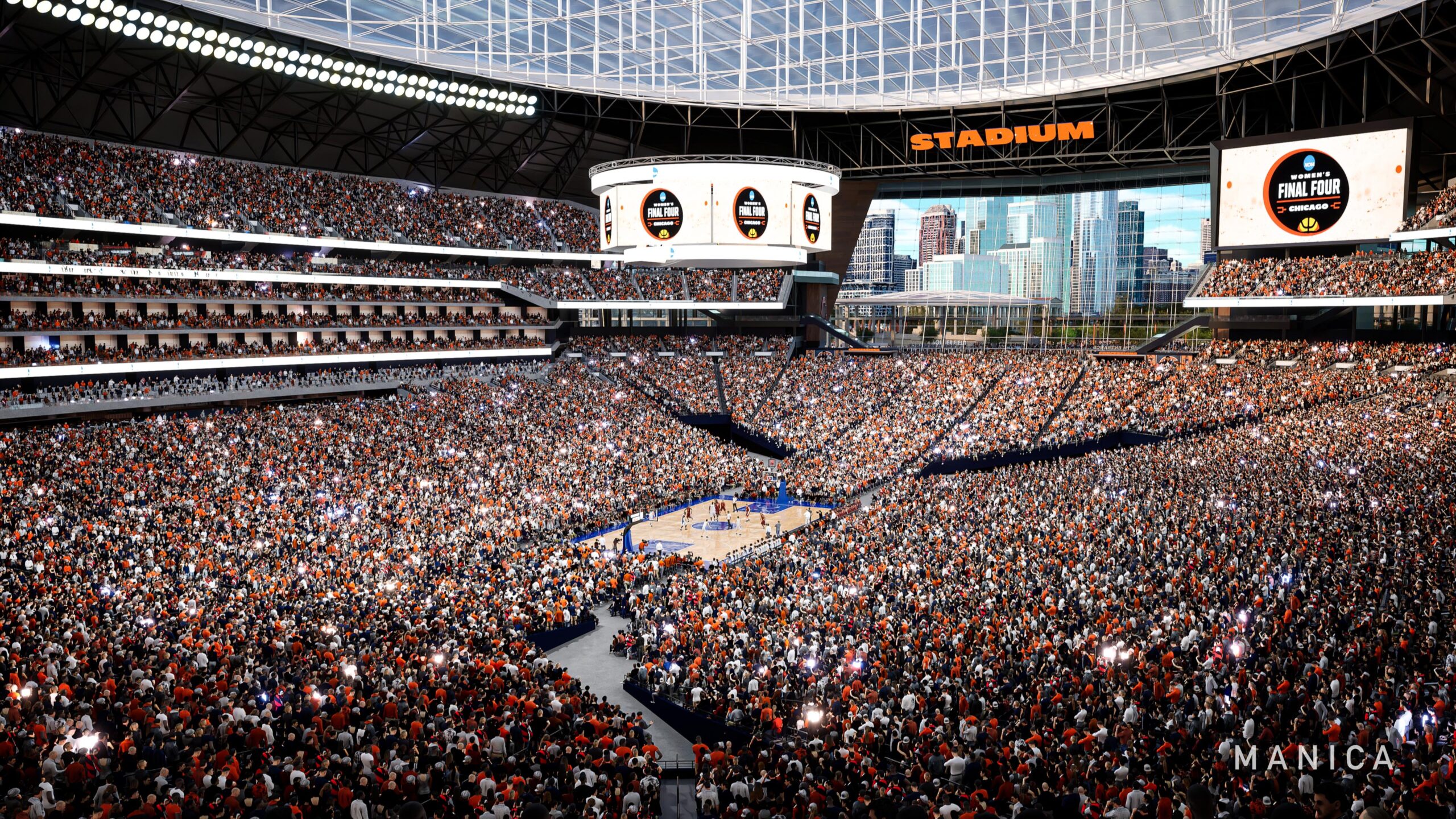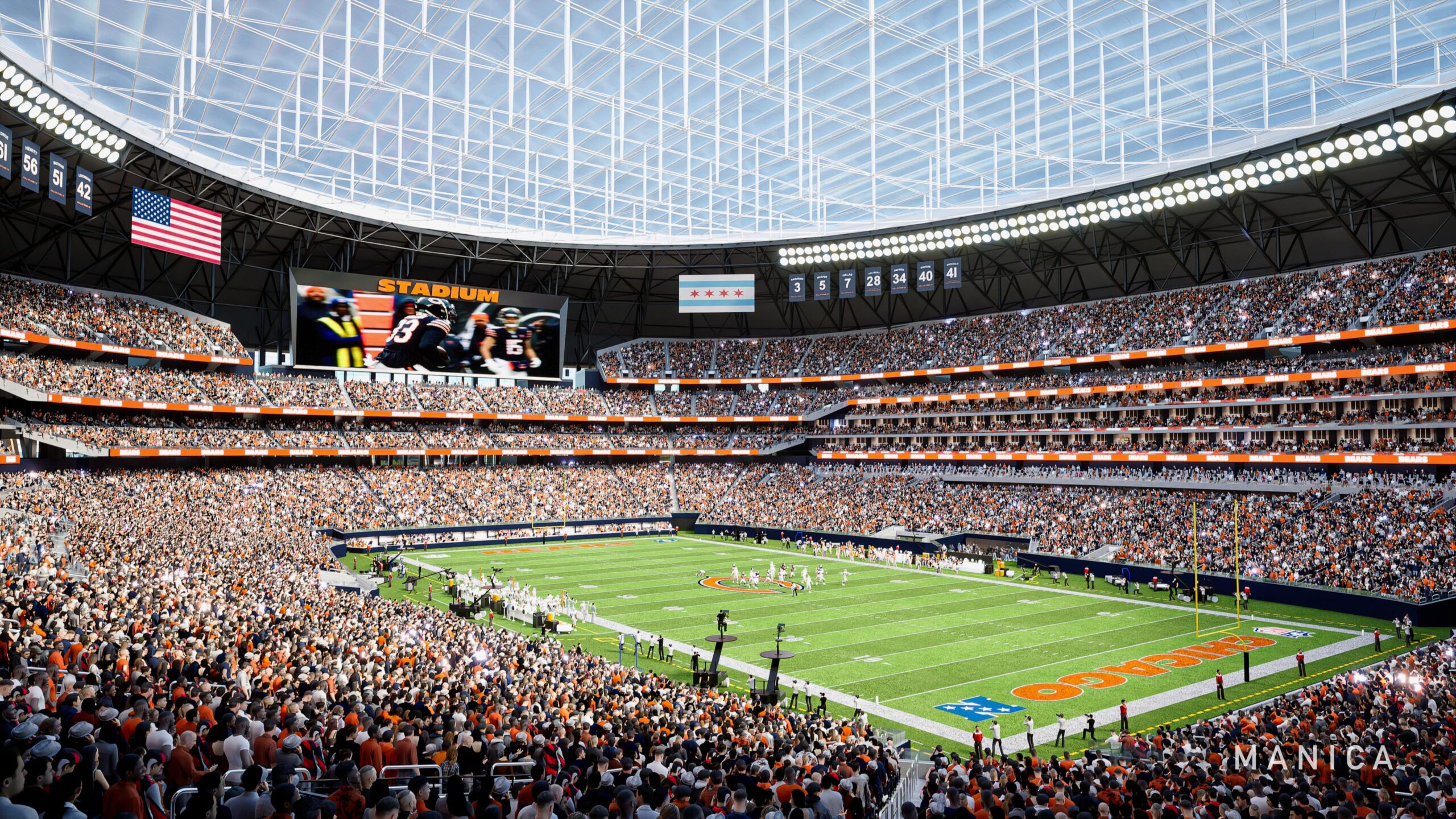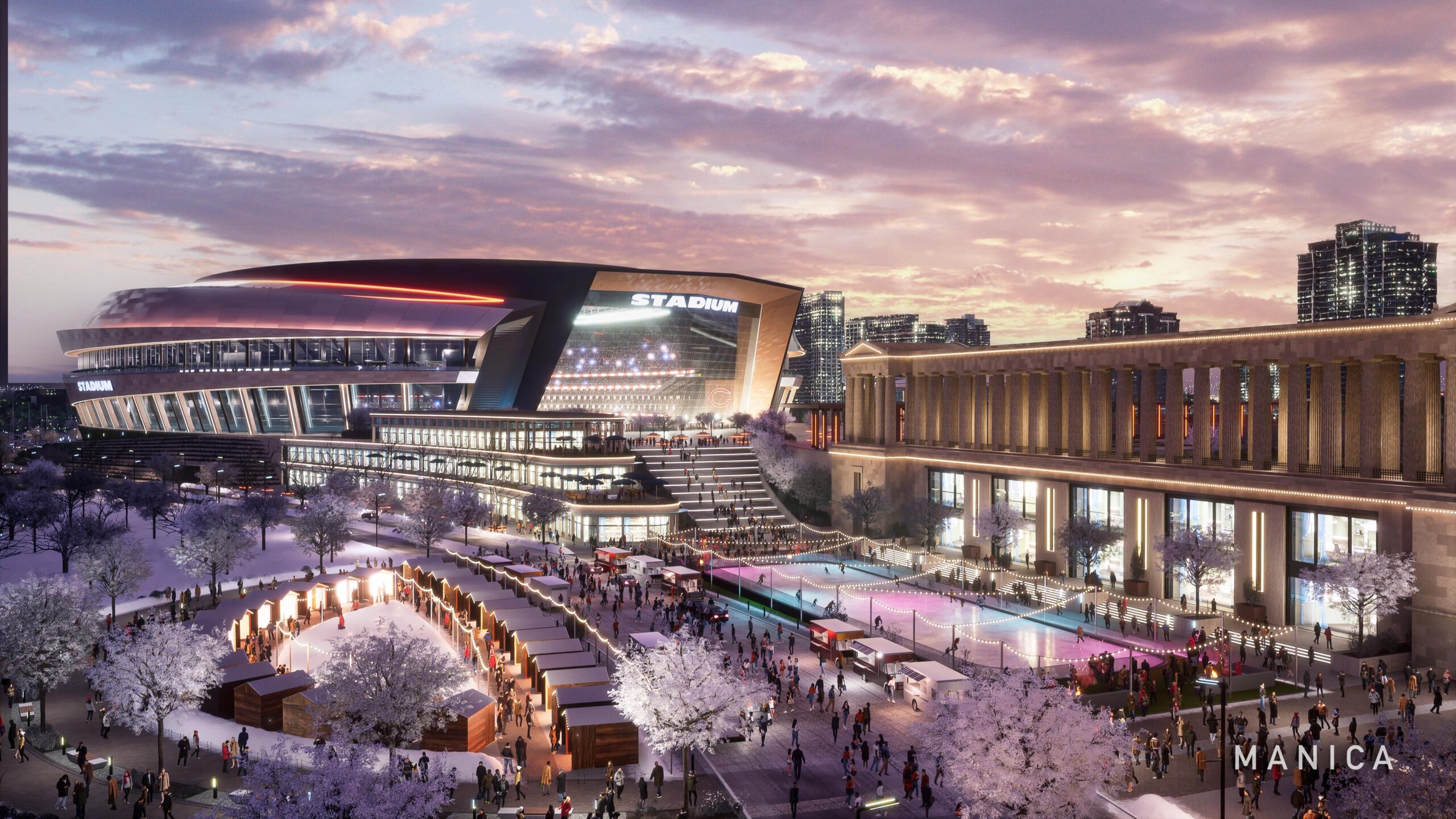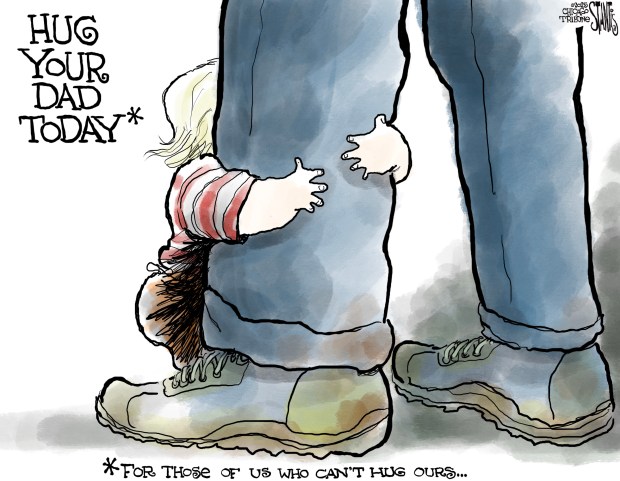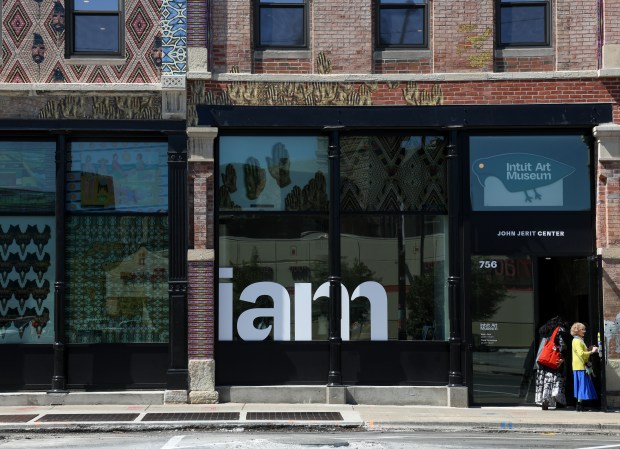The Chicago Bears’ epically inept unveiling of plans for a new indoor stadium to replace Soldier Field will go down in Chicago lore as one of the loudest backfires in the history of the city.
The initially stated $3.2 billion stadium budget turns out to be less than half the cost of the complete project. The promise that Chicago taxpayers wouldn’t pay a penny was far from true. And giddy cheerleading by Mayor Brandon Johnson did more harm than good.
The whole matter unraveled soon after the Bears concluded their hourlong dog-and-pony show filled with more razzmatazz than a Blue Man Group performance. Illinois House Speaker Emanuel “Chris” Welch said he couldn’t get votes for their stadium project even if he tried. Gov. J.B. Pritzker declared the plan a nonstarter.
A cardinal rule in any negotiation is to avoid getting to “no.” Once that word slips out, getting to yes gets much harder. Pritzker hasn’t entirely written off the possibility of a stadium deal, perhaps somewhere down the road, so the question now is what it might take to resuscitate an idea that nearly died on arrival.
The Bears won’t just let this one go. They hired team President Kevin Warren for the express purpose of getting a deal like this done. And Johnson — who traveled to Springfield this week to inform lawmakers that they “owed” the city $1 billion for Chicago Public Schools — can’t turn back now, not after his over-the-top embrace a few days ago.
The Bears and Johnson are convinced they have this one right. That Chicago needs an indoor lakefront stadium in order to hold its place as an urban entertainment center. That Final Fours, Super Bowls and, say, a Taylor Swift residency might all be possible. That their project really can create billions in revenues for construction workers, locally owned suppliers, restaurants, hotels, merchants and others.
That, say, bonds sold to rehab Soldier Field just two decades ago can be rolled into a new $1.2 billion debt issue — with an almost unheard-of 40-year amortization — without trashing the state’s credit rating.
Such are the visions Warren will conjure as he sets out on what will be an arduous effort to breathe new life into the lakefront stadium plan. A delay to the end of this year could add $150 million to the project’s cost, Warren has warned. He should count on that much cost and more. A likely Friends of the Parks lawsuit alone could block progress, even if Warren can line up the political support and financing the Bears need.
In order to take even a first step toward yes, Warren will need to refocus the financial discussion.
Consider the Bears’ proposal to refinance $400 million in bonds sold by the Illinois Sports Facilities Authority in order to refurbish Soldier Field just 22 years ago. The idea has received almost unanimous scorn — and the proposed 40-year term for the proposed new IFSA bonds is an obvious warning that the Bears are stretching hard to make the finances work.
But let’s be real: Even if the lakeside stadium does not get built, the Bears likely will still move still out of Soldier Field before those IFSA bonds expire in 2032. If they do break their lease and move to Arlington Heights, revenues from Soldier Field would mostly dry up.
That could put Illinois taxpayers on the hook for annual bond payments that will reach $91 million by the time those bonds expire in 2032. IFSA sold the bonds, but the state guaranteed them, and the state and city of Chicago could wind up covering the cost if IFSA’s coffers fall short.
Add up the city’s exposure, and the Bears could make a case that their proposed scoop-and-toss of the Soldier Field debt is better for taxpayers than if they move to Arlington Heights and leave Soldier Field holding the bag.
Recapitalizing the Bears might also be needed. The McCaskeys, who control the team, are pikers compared to the billionaire class that makes up most of the NFL’s ownership groups. Yes, the Bears are committing roughly $2.3 billion toward the new stadium — but much of that is expected to come from other people’s money.
Instead of borrowing, the McCaskeys could sell shares in the team. Just one example: Billionaire Pat Ryan already owns a chunk of the Chicago Bears Football Club Inc. Invite Ryan to buy more shares, and his equity investment would strengthen the team’s balance sheet, reducing the borrowing needed for the McCaskeys to make the deal work.
The Bears would benefit from Ryan’s savvy, besides. Look at what he accomplished in Evanston, overcoming strong local opposition to get approval for a new Northwestern University football stadium he is funding.
A third leg of the Bears’ lakeside-stadium resuscitation plan could be to turn the lip service about a “progressive” approach to their plan into an objective reality.
The Bears are promising that locally owned vendors will get contracts once the stadium gets built. At a manageable cost, they could jump-start business development by funding programs that could help would-be entrepreneurs launch companies that grow big enough, by the time the stadium opens, to serve the crowds that flock to the venue.
One such program — the Neighborhood Entrepreneurship Lab, sponsored by the Chicago Community Trust — has helped first-time business owners build successful companies. The Bears could use that program as a model and fund an independently run program to help jump-start a cohort of vendors that might grow up between now and when the stadium opens for business.
These are just a few ideas that could get the Bears past the initial public revulsion to the proposal presented late last month.
To get all the way to “yes” — with public officials, with taxpayers, with the community at large — the Bears likely will need to do much more. The state has higher spending priorities — such as schools, roads and public safety. Johnson likely lacks the political savvy to push a deal through. The Bears’ claims of economic impact from the stadium project likely won’t stand up to public scrutiny or outright opposition.
The Bears’ vision for a lakeside stadium, as first proposed, is not a live option. It would take bold, resourceful and persistent work on a second draft — by the team and the mayor — to bring it back to life.
David Greising is president and CEO of the Better Government Association.
Submit a letter, of no more than 400 words, to the editor here or email letters@chicagotribune.com.


